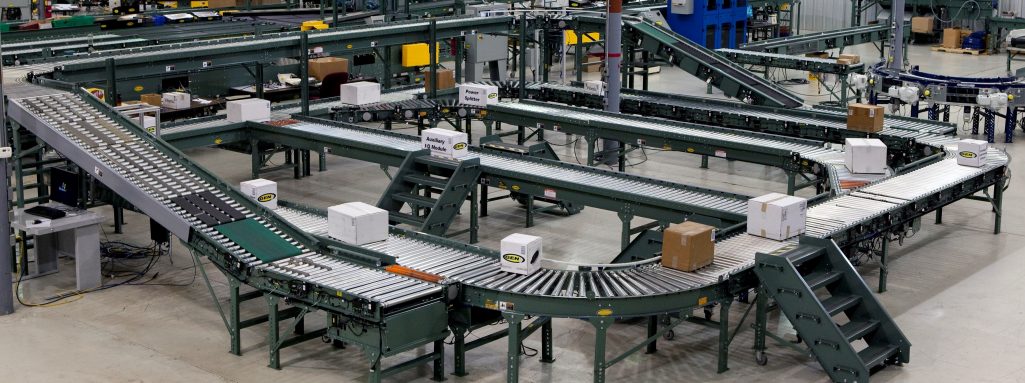Conveyor rollers are hardware gizmos used to shift equipment around an area with only the minimal effort. These products normally are made up of frames with inbuilt rollers, but might utilise wheels or belts. They could either be engine powered or be based upon manual vigour.
You’ll find 1,000’s of sites with advice surrounding ‘conveyor roller’ this is actually one of the best sites www.conveyorrollers.co.uk
Rollers are often useful to move bulk components, and there are various different varieties of rollers for specific requirements. Rollers and other conveyors can potentially lift material, use vibratory movement to transport material, and hang from above. Various other key types include screw conveyors, chute conveyors and tow conveyors.
Lets take a closer look at some of the main types of conveyor.
Conveyor Rollers
These are handling products which use rollers mounted in frames to manoeuvre materials. The factors it is advisable to take into account would be the weight total capacity and circumference, in addition to the conveyor width and length. Roller conveyors tend to be present in handling spaces including loading docks, baggage handling or assembly lines. Rollers use gravitational forces or manual power to move goods around and can be straight or bent dependant on location or working environment.
Powered roller conveyors use driven rollers installed in frames to move merchandise and objects around. The principle consideration is the kind of drive that you require. The most recognised drive types include belts, chains and motors. Powered roller conveyors have many uses, which include food handling, packaging and many other assembly line industrial sectors.
Wheel conveyors use powered wheels to transfer goods, either by gravitational forces or manual power. If buying a wheel system, you must think about load capability, the actual measurements and the electric requirements. Wheel conveyors are normally employed for loading and unloading lorries, in addition to transferring substantial large physical objects such as pallets. Depending upon the load requirements, wheel numbers and spacing may differ.
Vibrating conveyors use rotary or linear vibration to manoeuvre goods or components along. They are commonly used to move bulk materials like gravel and coal. Depending on the required use, many sizes are available.
Overhead conveyors are attached to ceilings and use trolleys moved by chains, cabling or other connections. They are most often present in industries in which the products really should be hung, for example parts handling systems, or for cooling applications. Dependant upon the intended use of the overhead system, the load carrying capability could be very important. Most devices are powered while you can find those which are hand operated.
Belt conveyors use continuous belts to relocate merchandise. There’re regularly employed in food services, for baggage handling, in packing and shipping and in the postal service, even when you would mostly associate them with the cash registers in supermarkets. Belt conveyors are generally powered and perform at several rates of speed. Belts might be worked flat or maybe at slope inclines.
Beltless magnetic conveyors utilise moving magnets beneath stationery plates to move magnetic or ferrous components. This could be comprising of scrap metal or machine parts. Beltless magnetic conveyors can be horizontal, upright or a mix off each of them.
The Uses Of Roller Conveyors
Your decision concerning conveyor system is dependent on the product style, velocity, elevation and industry focus particular towards your business. Certain styles of conveyor, which include belts and vibrating units, can be installed over long distances in industries such as mining and raw materials. At the same time, a vibrating belt system would be of little use in food manufacturing or electronics products industries.
Conveyors might be manually operated, which is when products are moved along manually over the rollers or wheels. Others are air powered or engine powered. Normally, however, they are driven by electric-powered motors. This either occurs directly or through reduction gears, chains and sprockets.
Materials and goods are usually moved on the top surfaces of conveyors, however overhead conveyors are definitely the most apparent exception.
How To Choose A Conveyor Roller
If you’re attempting to transfer objects quite easily coupled with the smallest amount of energy being applied and maximum personal safety, you must review your needs and requirements diligently. Your ultimate choice will be dependent upon the marketplace in which you work, the option for power source (or not) and also the financial budget you’ve got.
Conveyor rollers might be the most straightforward and highly versatile system and also one of the most affordable. Roller systems are also simple to operate and maintain and can be customised to a assortment of business sectors and uses. Solutions can be custom-designed to for your available space and rollers can be selected by materials, weight capacity, speed capacity and more. This is why conveyor rollers are some of the most popular choices for UK establishments.
Roller conveyor platforms can be custom-designed from modular components. These include straight sections, contours, transitions, merges, partitioning plus much more. Manufacturers will give design specialist knowledge and design and installation guidance, allowing you to get the most reliable device for your need. They may also offer on-going routine maintenance assistance and spare parts to help keep your articles and your business moving.
If it’s time you expanded your company and you aspire to improve production, storage, delivery or more, then a conveyor roller system will probably be just what you’ve been searching for.

